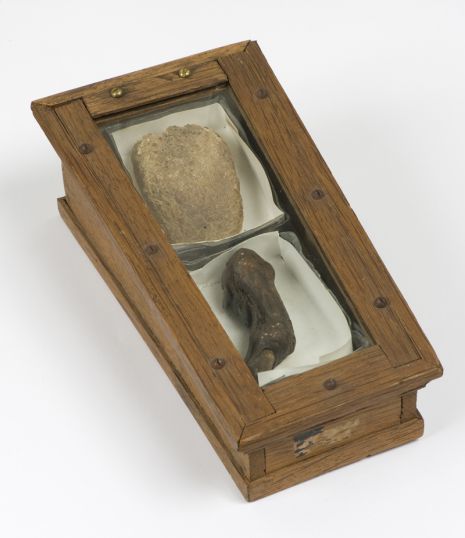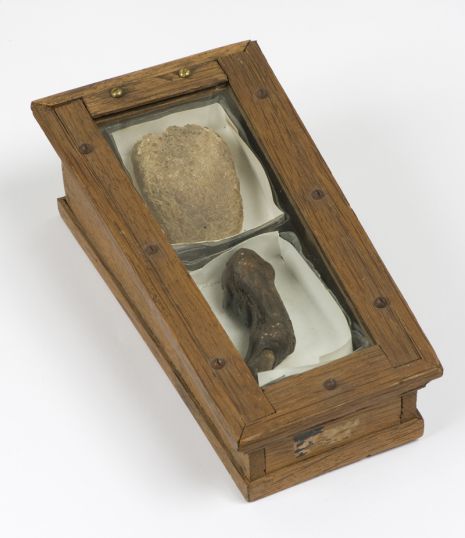On August 20, 1672, Johan de Witt, former Grand Pensionary of Holland, arrived at the Gevangenpoort in The Hague. His brother was imprisoned there on suspicion of plotting an attack on Prince Willem III. The arrival of Johan and the rumor that Cornelis would 'escape' from the Gevangenpoort, provoked an angry mob. Hague shooters stormed the prison and dragged the brothers outside, where they immediately killed them. The bodies of the brothers were then hung on the seesaw (the gallows) on ‘het Groene Zoodje’, the scaffold of the Hof van Holland on ‘de Plaats’. Here they were stripped of their body parts. Bystanders bought the limbs to take home or show them in the pub as a reminder of the horrific event. After the murder, Johan's tongue and a finger of Cornelis ended up with supporters of the De Witten, who kept them as relics.

Tongue and finger of the De Witt brothers
Read more
Supporters of the De Witt brothers kept Johan's tongue and a Cornelis’ finger as relics in lead boxes. It also contained documents explaining its contents. Based on these notes, we know that Nicolaas Witsen, mayor of Amsterdam, owned the relics between 1672 and 1717. In 1889 D.J. Cockuyt from Leiden gave the tongue, finger and the accompanying evidence to the museum. The then director had a "small coffin made of old oak wood, with a glass lid" made to display "these important historical objects". Many museum visitors were shocked at the sight of this new acquisition. On October 23, 1893, the city council of The Hague banned the exhibition of the tongue and finger. Despite this, the body parts of the De Witt brothers have been on display in the gallery for the last thirty years.
In 2011, researchers from the Netherlands Forensic Institute (NFI) determined that the alleged big toe of Cornelis's left foot was a finger. On the television program ‘Historisch Bewijs’ (Historical Evidence), the tongue and finger were once again scrutinized, this time to investigate their authenticity. It was not possible to draw up a DNA profile with material from the tongue and finger, but it could be established that 'the finger was forcibly removed from the body and belonged to a man between 40 and 50 in the year 1672'. This makes it a lot more likely that the body parts do indeed come from the brothers Johan and Cornelis de Witt.
Specifications
- Date: 1672
- Object number: 1889-0001-HHI/a-b
- Dimensions: 8.8 x 5.5 x 15.7 cm (including box)
- Materials: wood, glass, metal, human material
Literature (Dutch)
- J. Servaas van Rooyen, Catalogus der Geschied- en Oudheidkundige Voorwerpen van het Gemeentemuseum van ’s-Gravenhage (’s-Gravenhage 1908) 127-131.
- Jan van der Hoeve, Robert van Lit en Jori Zijlmans, Zeven eeuwen Gevangenpoort. Van voorpoort van het Hof tot museum (Leiden 2007) 99.
